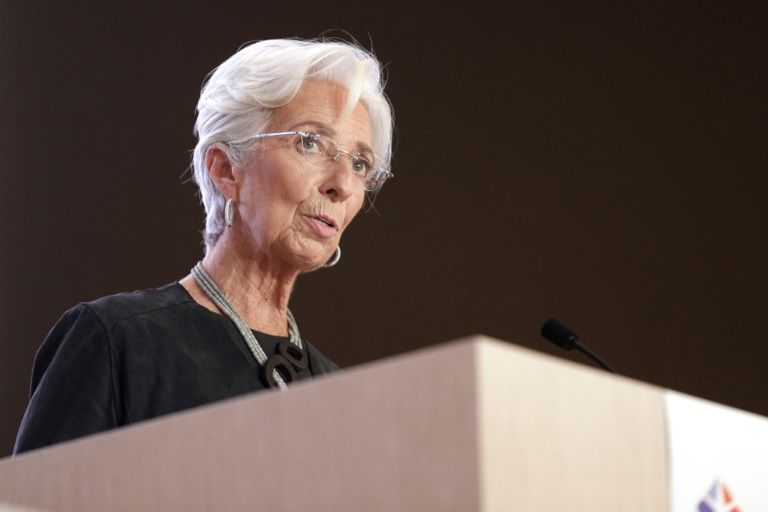ECB under pressure to bolster virus response at meeting
It comes after she told the French daily Le Monde that any economic recovery seen during the summer “now risks losing momentum” as new shutdowns put in place to stem the second wave of the pandemic restrict business activity.
On Wednesday, Germany joined major economies France and Italy in announcing tough new measures — including closures of restaurants, bars and cultural activities — in an attempt to wrest control of the virus.
The news paints a gloomier picture of the final few months of 2020 than Lagarde and her team might have expected when she said that an uptick in virus cases only constituted “headwinds to the short-term outlook” at the previous central bank policy meeting six weeks ago.
At the time, ECB watchers were more concerned about the strength of the euro against the dollar than a downgraded outlook.
Instead, while the euro has stabilised, the economy has begun to slump.
Eurozone inflation was -0.3 percent in September after dropping into negative territory in August — well below the ECB target of below, but close to, two percent — as deflationary trends threaten future investment to get the economy moving again.
“With the eurozone inflation outlook already deteriorating for some time and the new wave of Covid cases across Europe… the ECB is moving closer towards another round of easing,” ING analysts said.
But Lagarde will likely wait for a more accurate picture of the fourth quarter to emerge and hold off making a firm decision on bolstering the economy until a key policy meeting in December.
– Not if, but when –
Current policymaking dates back to June, when the Frankfurt-based institution added to its pandemic stimulus package, known as PEPP.
It is now pumping in 1.35 trillion euros ($1.6 trillion) in cheap money to support fragile economies.
Now the “only relevant question is when, and how, the ECB will ease again” according to Frederik Ducrozet, strategist at Pictet Wealth Management.
Most observers are looking ahead to the final meeting of the year in December, when the institution will unveil its latest quarterly economic projections.
By then, the severity of the pandemic’s second wave in Europe will be better known, the US election will have concluded and EU chiefs will be closer to knowing the final outcome of Brexit negotiations, all factors that have contributed uncertainty.
Lagarde will still have to find consensus between the hawks and doves on her team — those who believe the ECB’s monetary policies should be more restrained and those who think support for the bloc’s economy should carry more weight.
Unlike her predecessor Mario Draghi — who, despite being credited with saving the currency during the euro debt crisis, left behind a divided institution — Lagarde “seems to to strive for near-unanimity” within its decision-making body, says Florian Hense, an economist at Berenberg.
“That will unlikely be the case before the December meeting” he said.
Another option would consist of lowering interest rates even further into negative territory, which stand at rock-bottom -0.5 percent.
However, that “would be risky because it would deal a further blow to banks already in bad shape”, said Bruno Cavalier, chief economist at Oddo.
Central bank observers on Friday may also look to the ECB website and a likely blog post from chief economist Philip Lane to explain monetary-policy decisions of the previous day, “helpful in gauging what the ECB will do in December” Hense said.
However, “ideally”, Ducrozet concludes, “we should not have to wait until the ECB publishes a blog on Friday for the message to be received, loud and clear.”
Disclaimer: Validity of the above story is for 7 Days from original date of publishing. Source: AFP.


